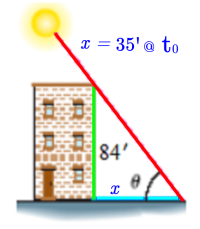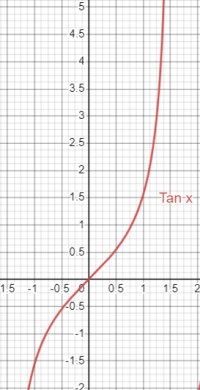coooool222
Junior Member
- Joined
- Jun 1, 2020
- Messages
- 93

Basically all i want to know is if the distance from the sun to shadow (the hypotenuse) is changing or constant.
i tried to use the equation cos (theta) = length of shadow (which is x) / the hypotenuse (distance)
i took derivates of both sides but i do believe the hypotenuse(distance) is changing with time so i cannot use it rather i would need to use
tan theta (length of building)/length of shadow


